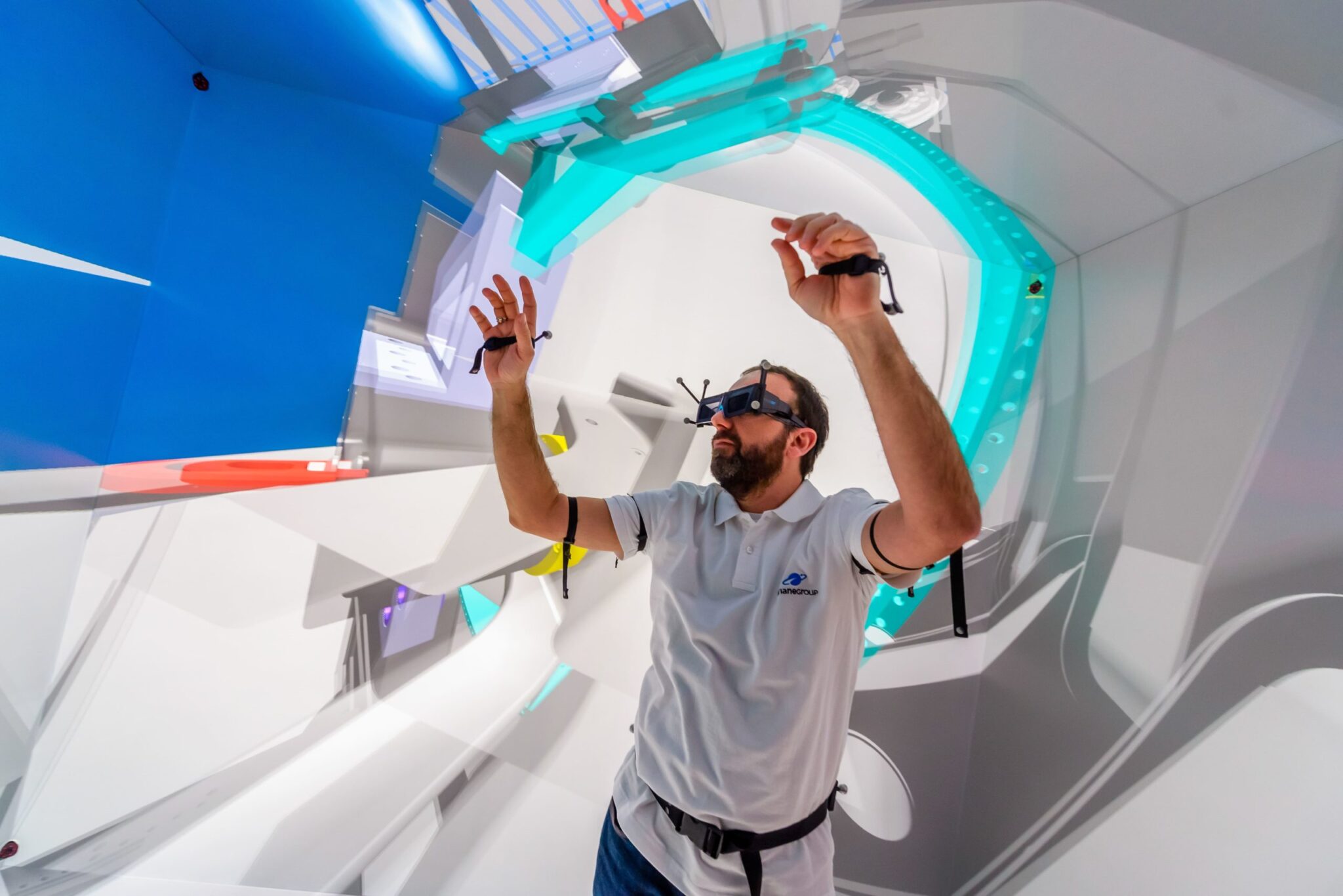How ArianeGroup uses virtual reality every day
16.01.2024

A single solution
Our first steps in VR were made in the early 2010s, using software from Airbus Group Innovations, the Group’s central global research network, and in 2018 ArianeGroup approached start-up Skydea which was offering a turnkey VR solution, Skyreal. Based on the Unreal Engine game engine, Skyreal is powerful and adaptive enough to provide a single software program which meets the needs of ArianeGroup’s different sectors. The launcher production sector was the first to use it. Employing VR to validate product and tool designs, plan the layout of existing facilities or new buildings, design workstation ergonomics, and visualize full-scale machines, makes it is much easier to simulate situations and identify problems. This is why many of the new Ariane 6 production buildings at ArianeGroup’s sites in France, Germany, and French Guiana were originally created virtually. Today, this expertise is expanding into design and engineering offices which now provide immersive life-size 3D models.

Ergonomic study of an Ariane 6 engine assembly station at Vernon, France.
Fast and intuitive initiation
Each session organized to validate a new industrial process (assembly of parts, tests, maintenance) is supervised by an operator who makes sure everything goes smoothly while involving as many of the project’s participants as possible, so that they are fully aware of the expected results. Over two to three hours, or even a whole day for the longest sessions, the participants take turns to check the parts and their accessibility, taking measurements and sometimes even making decisions in real time.
Today, the VR rooms have been replaced with mobile facilities consisting of a headset, cameras, and a computer that all fit into a case, so that sessions can be organized on any site. Once in the simulation, the initiation is very fast. It only takes a few minutes to learn how to move around, fly, be teleported or pick up objects. The simulation is so real that you can activate a newly created mechanism to check its operation, or practice replacing a part before it even goes into production. Thanks to VR, we can anticipate difficulties and risks and fine-tune production before it begins. At the end of a simulation, we can also update the design of certain components directly, by connecting the VR software to the company’s information system.
“We save a great amount of time and can identify problems much more accurately. For example, after just five minutes of VR immersion, one of our engineers, who had been looking at his 3D model every day, realized that a particular part was in the wrong place.” Christophe Reig
Wide-ranging advantages
In addition to visualizing a product or workshop on a full-size scale, VR saves a considerable amount of time. The most striking example is no doubt the fact that we reduced the time it takes to define the preliminary design of the piping for a new-generation Ariane 6 engine by a third. If the designer draws a preliminary VR design of the piping network, it helps the computer-aided design work and significantly reduces decision loops, design iterations and the number of real models that need to be produced.
Making VR a systematic choice, this kind of lived experiences will become more common. That’s why ArianeGroup is working on developing training courses and qualifications to build up employees’ skills and allow them to practice in near-real conditions before going into the workshops. VR also plays a key role as an extended collaborative tool, and given the rapid development of this technology over the past decade, the expectations are high. For example, we hope to be able to set up direct collaboration all over the world, something which is currently slowed down by cyber security requirements. In future, we aim to make it possible for employees based in Kourou, Bremen, Ottobrunn, Bordeaux, Les Mureaux or Vernon to be able to connect together in order to work simultaneously on installing a new system or preparing a launch.

Use of VR to test the installation of equipment in Ariane 6’s upper stage tank in Bremen, Germany.